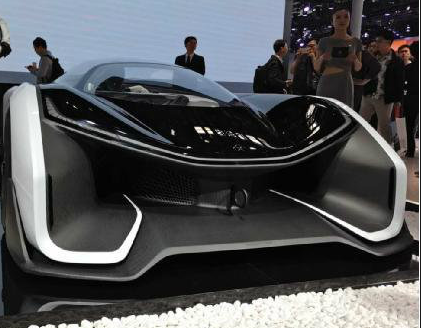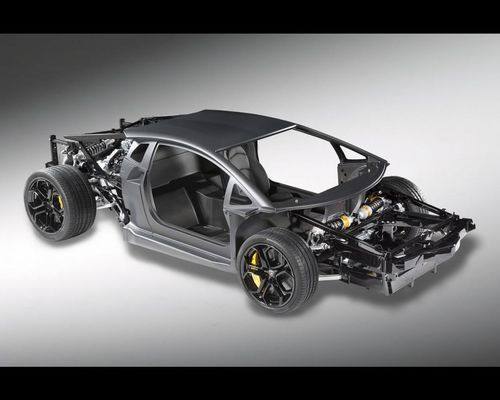Carbon fiber in automotive lightweighting and emission reduction
Release time:
2025-07-01
In the global automotive industry's shift towards low-carbonization, lightweighting technology has become a core path to achieving energy saving and emission reduction goals.
In the global automotive industry's shift towards low-carbonization, lightweighting technology has become a core path to achieving energy efficiency and emission reduction goals. Carbon fiber reinforced polymer (CFRP), with its superior mechanical properties and lightweight advantages, is rapidly penetrating the mainstream passenger vehicle market from the high-end sports car sector, becoming a key material in driving the green transformation of the automotive industry.

I. Material Properties Drive the Lightweighting Revolution
Carbon fiber composite materials have a density of only 1.5-2.0g/cm³, equivalent to 1/4 of steel and 2/3 of aluminum alloy, yet possess 4-5 times the specific strength and twice the specific stiffness of steel. This "lightweight and high-strength" characteristic makes it possible to reduce the weight of the car structure. More importantly, carbon fiber composite materials are designable. By adjusting the fiber layup angle and direction, anisotropic mechanical properties can be achieved to precisely match the complex stress requirements of automotive components. For example, using a carbon fiber driveshaft can reduce weight by 60% while increasing the critical speed by 2.5 times, significantly improving NVH performance.
II. Systemic Breakthrough in Vehicle Weight Reduction
In the field of vehicle body structure, the application of carbon fiber has broken through the limitations of traditional metal frames. The BMW i3 model, through its all-carbon fiber passenger cabin design, achieves a 50% reduction in body-in-white weight and a 30% increase in torsional stiffness. This structural innovation not only reduces the overall vehicle weight but also optimizes the collision energy transfer path, enabling small-sized vehicles to achieve the safety standards of C-class vehicles. In the chassis system, carbon fiber suspension control arms reduce weight by 40% compared to aluminum alloy components, while increasing fatigue life by 3 times, providing key support for extending the range of electric vehicles.
In powertrain components, the application of carbon fiber is also significantly effective. A certain model's carbon fiber driveshaft reduces weight by 60% compared to steel components, and reduces rotational inertia by 80%, shortening the 0-100km/h acceleration time by 0.3 seconds. In the battery pack field, the application of a carbon fiber top cover reduces system weight by 25% while improving thermal management efficiency, creating conditions for improving battery energy density.

III. Industrial Breakthrough in Manufacturing Processes
Traditional carbon fiber manufacturing relies on manual layup, which is inefficient and costly. The breakthrough of high-pressure resin transfer molding ( HP-RTM ) technology has reduced the component molding cycle to less than 10 minutes, improving production efficiency. This technology, using 120℃ high temperature and 100bar high pressure, achieves rapid resin impregnation and has been successfully applied to mass-produced vehicles.
In terms of material innovation, the emergence of thermoplastic carbon fiber composite materials has opened up new paths for the recycling and reuse of automotive components. This material can be recycled multiple times through melt re-molding, which is more in line with the concept of a circular economy than traditional thermosetting materials.
IV. Emission Reduction Effects Throughout the Life Cycle
The weight reduction advantage of carbon fiber produces significant emission reduction effects throughout the vehicle's life cycle. Studies have shown that for gasoline vehicles, every 100kg reduction in weight can reduce fuel consumption per 100km by 0.3-0.6 liters; for electric vehicles, a 10% weight reduction can increase the range by 5%-8%. More noteworthy is that the carbon emissions during the production phase of carbon fiber components can be offset by the reduced energy consumption during use. A life cycle assessment of a certain model shows that although the carbon emissions from carbon fiber production are higher than those of steel, carbon balance can be achieved after the vehicle has been used for 50,000 kilometers, and cumulative emissions reduction reaches 1.2 tons at 100,000 kilometers.
V. Technological Challenges and Development Directions
Although the application of carbon fiber in the automotive field has made breakthroughs, it still faces challenges such as cost and connection technology. The development of new short-cut carbon fiber reinforced thermoplastic composites has brought the cost of injection-molded components close to that of high-end plastics, creating conditions for large-scale application in interior parts.
In the field of connection technology, breakthroughs in new processes such as electromagnetic riveting and induction welding have effectively solved the problem of connecting carbon fiber and metal dissimilar materials. The electromagnetic riveting technology developed by a certain research institution can reliably connect carbon fiber composites and aluminum alloys within 0.1 seconds, and the joint strength is higher than that of traditional methods.
Looking to the future, with the maturity of material recycling technology and the popularization of intelligent manufacturing, the application of carbon fiber in the automotive field will experience explosive growth. Its integration with 3D printing and intelligent materials may give rise to automotive components with adaptive structures, enabling vehicles to actively strengthen their structures during collisions and dynamically adjust their stiffness during driving, opening up a new dimension for automotive lightweighting. The continuous breakthroughs in carbon fiber technology are providing key solutions for the carbon neutrality goals of the global transportation sector.
Disclaimer : This is for the exchange and sharing of composite material professional knowledge and market information only, and is not for any commercial purpose. If there are any copyright issues or questions about the content, please contact us immediately. We will deal with it promptly.
Related News

